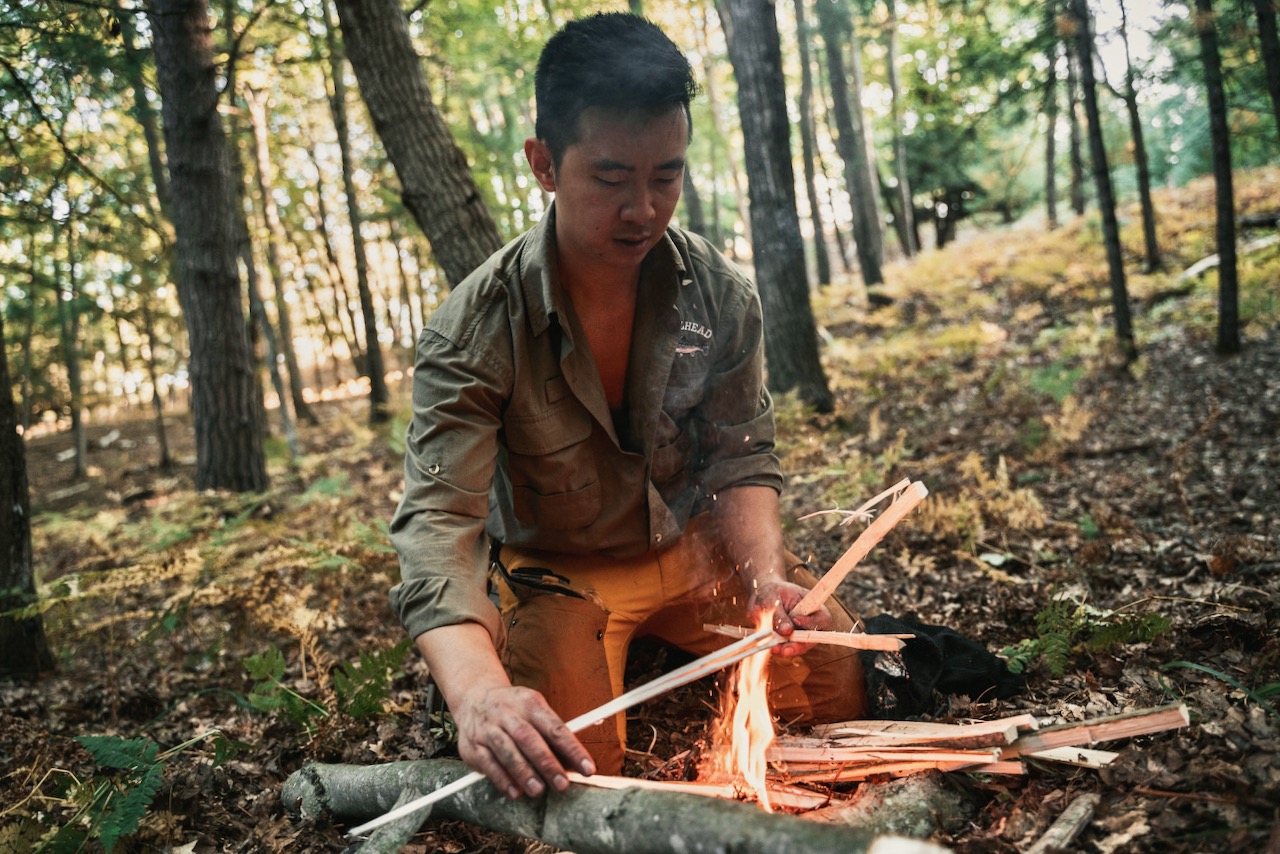LIFE LESSONS
Backcountry survival tips from a wilderness reality-TV star
Advertisement
One of two Canadians competing on season nine of the reality-TV show Alone, which aired last May, Teimojin Tan knew his survival skills would be tested to the limit. He and nine other contestants were dropped off in separate locations in the remote wilds of Labrador, each equipped with only 10 pieces of gear they’d chosen themselves, plus a camera to record the experience.
Tan, 33, selected a multi-tool, axe, sleeping bag, ferro rod, cooking pot, bow and arrows, paracord, trapping wire, fishing line and hooks, and emergency rations. The goal? See who could survive the longest to win the $500,000 prize. An emergency room doctor, wilderness survival educator and former Canadian Army Reserve soldier, Tan ended up lasting 63 days and finishing in third place, making him an ideal candidate to share his proven survival tips.
Advertisement

#1 GEAR
Whether you’re heading out for the day or an extended adventure, always carry a cell phone, satellite phone or satellite messenger to call for help should an emergency arise, advises Tan. Also bring at least a few survival essentials, he says, including a mylar blanket (which can double as a tarp for shelter), a multi-tool, at least three fire starters (ferro rod-magnesium combo, windproof lighter and waterproof matches), a way to purify water and a first-aid kit.
#2 PLANNING
Advertisement
Before you leave, share your precise itinerary and route with someone back home to make it easier to find you in an emergency, says Tan. Include instructions on what to do if you have not returned or made contact by a certain date and time.
#3 MINDSET
Should you get injured or become lost, it’s crucial not to panic, which can result in poor decisions and make the situation even worse, warns Tan. So, the first thing to do after making a call for help is to ground yourself. “Take a breather and evaluate the situation to try to figure out what you need to do next,” he says. “Taking in all that surrounds you—both the dangers and the resources—is super-important.”
#4 PRIORITIES
Once you’ve calmly assessed the situation, the next important thing is to protect yourself from the elements. While every scenario is different, that typically means finding or creating a shelter, then securing clean water and making a fire. Rather than erect an elaborate bushcraft shelter, Tan recommends finding a natural formation in the lee of the wind that you can sit under or crawl into. In a survival situation, he says, the more energy you can save, the better.
For more of Tan’s survival tips, go to www.survivaldoctors.com.
